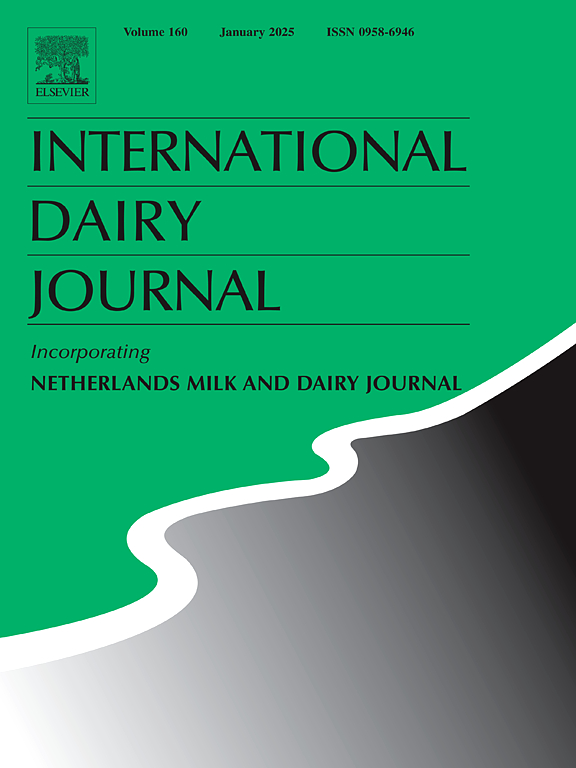Short communication: Health risk assessment of aflatoxin M1 concentration in raw milk of dairy cows under wet and dry seasons of hot-humid tropical climate zone
IF 3.4
3区 农林科学
Q2 FOOD SCIENCE & TECHNOLOGY
引用次数: 0
Abstract
This study aimed to investigate the occurrence of AFM1 in Indonesia during dry and wet seasons as well as to compare the results of the maximum level of AFM1 allowed in raw milk by the Indonesian, USA and European Union legislation. A total of 80 milk samples were collected from forty dairy farms. The samplings were conducted at two different seasons, dry (DS; n = 40) and wet (WS; n = 40) seasons. To observe the climate conditions, the temperature and relative humidity were measured. Data revealed that a higher temperature humidity index was pronounced in WS group (P < 0.05). Dairy cows in both seasons experienced mild stress conditions. Data showed that all the milk samples (100 %) in wet and dry seasons were contaminated with AFM1 exceeding the maximum level of European Union, but still at the range of Indonesian and the United States legislations. A trend towards higher AFM1 concentration in the wet season was observed (P = 0.08). This is the first report of the detection and occurrence of AFM1 occurrence in dairy cows during two seasons of tropical climate zone in Indonesia.
短讯:热带湿热气候区湿季和旱季奶牛原料奶黄曲霉毒素M1浓度健康风险评价
本研究旨在调查印尼干湿季节AFM1的发生情况,并比较印尼、美国和欧盟立法所允许的原料奶中AFM1的最高含量。在40个奶牛场共采集了80个牛奶样本。在两个不同的季节进行采样,干燥(DS);n = 40)和湿(WS;N = 40)季节。为了观察气候条件,测量了温度和相对湿度。数据显示,WS组温度湿度指数明显升高(P <;0.05)。两个季节的奶牛都经历了轻微的应激状态。数据显示,在干湿季节,所有牛奶样本(100%)的AFM1污染均超过欧盟的最高水平,但仍在印度尼西亚和美国的立法范围内。雨季AFM1浓度有升高的趋势(P = 0.08)。这是印度尼西亚热带气候带两个季节奶牛AFM1检测和发生的首次报告。
本文章由计算机程序翻译,如有差异,请以英文原文为准。
求助全文
约1分钟内获得全文
求助全文
来源期刊

International Dairy Journal
工程技术-食品科技
CiteScore
6.50
自引率
9.70%
发文量
200
审稿时长
49 days
期刊介绍:
The International Dairy Journal publishes significant advancements in dairy science and technology in the form of research articles and critical reviews that are of relevance to the broader international dairy community. Within this scope, research on the science and technology of milk and dairy products and the nutritional and health aspects of dairy foods are included; the journal pays particular attention to applied research and its interface with the dairy industry.
The journal''s coverage includes the following, where directly applicable to dairy science and technology:
• Chemistry and physico-chemical properties of milk constituents
• Microbiology, food safety, enzymology, biotechnology
• Processing and engineering
• Emulsion science, food structure, and texture
• Raw material quality and effect on relevant products
• Flavour and off-flavour development
• Technological functionality and applications of dairy ingredients
• Sensory and consumer sciences
• Nutrition and substantiation of human health implications of milk components or dairy products
International Dairy Journal does not publish papers related to milk production, animal health and other aspects of on-farm milk production unless there is a clear relationship to dairy technology, human health or final product quality.
 求助内容:
求助内容: 应助结果提醒方式:
应助结果提醒方式:


